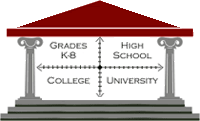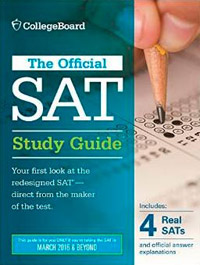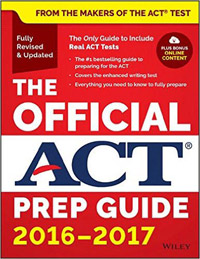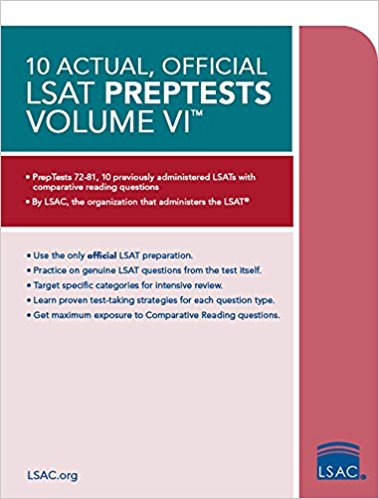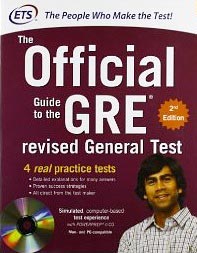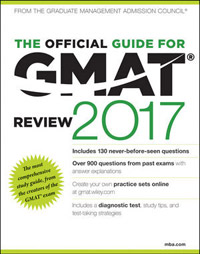|
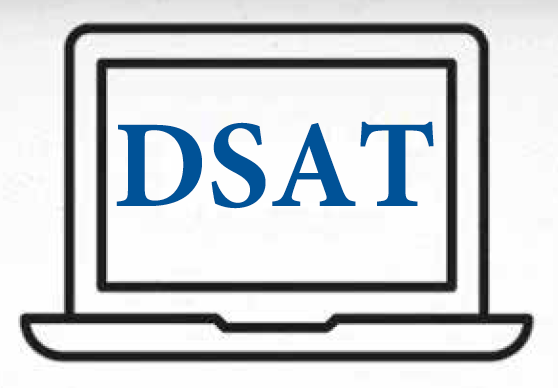
The new Digital SAT aka DSAT is a shorter, section-adaptive, online SAT that serves you one of two possible 2nd "modules," depending on your performance in the first module of both sections (Reading and Writing, Math). Below is a simple, 9-step plan to prepare yourself for the digital SAT as best you can.
Step 1: First, read my free e-book, Master the DSAT, for a detailed introduction to the new digital SAT.
Next, take a practice DSAT to determine your baseline score. You can find 7 free, official practice digital SATs, along with 4 practice PSATs and 3 (optional) 50-minute practice essays, via the College Board's free Bluebook app (computers and tablets only, no phones).
Once you finish the exam, go to mypractice.collegeboard.org to review your results and the official answer explanations.
You can also purchase the Official Digital SAT Study Guide with 4 practice DSATs and 191 additional practice questions—but the physical book is unnecessary: the paper practice exams feature the exact same questions as the digital Bluebook tests, but they don't include all of the possible 2nd modules.
The 191 additional questions can also mostly be found elsewhere: they are a mix of free Khan Academy digital SAT practice questions (read below for more on Khan Academy), some real, unique College Board DSAT questions, and even the occasional old SAT or PSAT question from the previous exam version.
The entire DSAT — Reading and Writing Module 1 (32 minutes / 27 questions), Reading and Writing Module 2 (32 minutes, 27 questions), Math Module 1 (35 minutes, 22 questions), and Math Module 2 (35 minutes, 22 questions) — takes around 2.5 hours, and should be taken all at once if possible.
Yes, you can still take notes on the provided scratch paper—make sure to bring your own pen and/or pencil! (Source: Digital SAT FAQ)
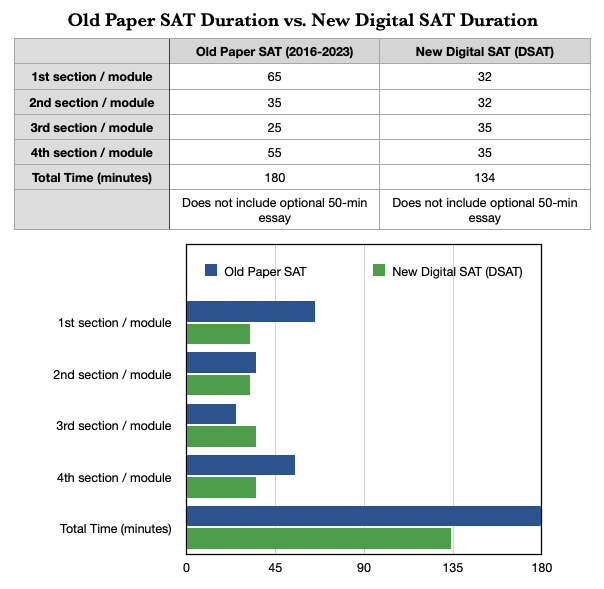
Keep in mind that every time you complete a full section-adaptive DSAT, there are still some questions (49 questions, to be exact) that you didn't see. You can access these questions by re-taking the test on Bluebook and performing differently on the first module: either intentionally skipping all the answers in the first module to earn the easy section module, or intentionally answering them all correctly to earn the hard second module.
Don't like taking digital practice exams? Well, you're not the only one. Unfortunately, you're probably out of luck when it comes to your actual digital SAT test day—unless you are approved for accommodations from the College Board. However, you can still utilize the "linear/nonadaptive" (aka paper) versions of these exams in your practice. These PDF exams contain mostly the same questions as the Bluebook tests, but also have about 20% unique questions. They do not, however, contain the same number of questions as the Bluebook exams, or have the same section duration.
1) Paper DSAT #4 / explanations / scoring
2) Paper DSAT #5 / explanations / scoring
3) Paper DSAT #6 / explanations / scoring
4) Paper DSAT #7 / explanations / scoring
5) Paper DSAT #8 / explanations / scoring
6) Paper DSAT #9 / explanations / scoring
7) Paper DSAT #10 / explanations / scoring
8) Paper PSAT 10 / NMSQT #1 / explanations / scoring
9) Paper PSAT 10 NMSQT #2 / explanations / scoring
10) Paper PSAT 8/9 #1 / explanations / scoring
11) Paper PSAT 8/9 #2 / explanations / scoring
Already ran out of official College Board DSATs? Consider the SAT Suite Question Bank, which is essentially a "remix" of official College Board Bluebook questions, and Khan Academy questions, which are not real SAT questions, but are created "in partnership with" the College Board (more on this later). If you've already taken the 6 Bluebook SATs, then you will see plenty of repeat questions in the Question Bank—but that's good, because repetition is a key component of learning.
Finally, you can find free PDFs of 64 official SATs and PSATs in the prior version here—but keep in mind that the digital SAT is significantly different than the paper SAT, especially with regard to the Reading sections: the digital SAT has 1 short Reading passage per question, while the paper SAT has 5 long passages, and 52 questions.
I also offer my private tutoring students exclusive access to an extensive, detailed spreadsheet that includes all 2,000+ officially released College Board DSAT questions (and much more). This spreadsheet is organized by category, and includes both official and proprietary answer explanations.
Step 2: Set a score goal. My students' score average improvement on the digital SAT (400 - 1600 scale) is about 150-200 points.
Step 3: Continue working on the content of the test, and taking more practice exams: Bluebook software (6 DSATs, 4 digital PSATs, 1,470 questions, 3 practice essays) / (Digital) SAT Suite Question Bank / Official Digital SAT Study Guide / Original 33 Sample Questions / Skills Insight Tool / 64 Old, Official SAT PDFs
Don't forget about the linear (nonadaptive) PDFs for the digital SAT, digital PSAT 10/NMSQT, and digital PSAT 8/9. These paper exams can be a great tool if you're trying to avoid studying on a screen.
If you would like a self-paced SAT prep program that tracks your strengths and weaknesses in each area of learning, then I can recommend signing up for Khan Academy, which is a free service that has partnered with the College Board to provide online DSAT drills, study, and practice. However, I repeat: the individual DSAT practice questions on Khan Academy are not official College Board DSAT questions.
Regarding paid books and self-paced online DSAT learning programs, I can also recommend any digital SAT books by College Panda aka Neilson Phu (Math), and by Erica Meltzer (Reading and Writing)—as well as UWorld for extra math practice only.
For additional help, consider an expert private tutor like me who can point you in the right direction.
In addition, keep reading challenging material, such as the Top 100 Fiction and Top 100 Non-Fiction titles on Amazon. Also check out literary websites such as The Atlantic, The New Yorker, The Economist, and even Grantland for the sports fans.
Step 4: (only recommended for lower-scoring students): take an SAT classroom course. These types of classes can be helpful for low scorers who need all the time, practice and repetition they can get. However, don't overpay for an "elite" class or a score "guarantee": these types of classes are all very similar, focusing mostly on test content and basic strategies for the average student. Instead, save your money for a qualified private tutor later on in the process. In addition, the so-called guarantees are usually full of fine print, so it's quite difficult to actually get your money back, even if you feel that you should qualify.
Step 5: Buy a good graphing calculator if you don't have one already—and start learning how to use DESMOS, which is a powerful and free online calculator that is now built into the DSAT.
Step 6: Once you begin studying, consider scheduling some time with me or another private tutor. You may meet with me for anywhere from 30 minutes to 100 hours, but most students need at least 15-25 hours for a full preparation. I recommend scheduling a 15-minute phone consultation with before the first lesson, to discuss timelines, scheduling, and the unique needs of the student(s).
Working with a private tutor is the very best way to maximize your score, for a variety of reasons:
1) You are given personalized attention, lessons tailored to fit your schedule, and the opportunity to discuss each question in-depth until you are fully satisfied.
2) Private tutors are usually the best instructors.
3) A skilled private tutor will serve as a friend and confidant, hold you accountable, give you specific assignments and work on any problem areas so that all you have to do is put in the effort. Simply talking about the questions with your tutor helps aid your understanding of each question and your test-taking strategies.
Homework:
As a general rule, students should spend at least one hour on homework for every hour of tutoring. The usual homework assignment is 2-4 modules from an official DSAT exam (approximately 1-2 hours per week, sometimes more). Students should time themselves, and mark the question where they run out of time—but continue working past the time limit if necessary. Additional practice and learning materials are also provided.
Feel free to break the homework into small parts, and to ignore the test clock at first—learning is best done untimed and in tiny increments, especially in the first half of the test-prep process.
Full, timed, and official practice DSATs should also be taken periodically, at the discretion of the tutor, to judge the student's progress.
The goal is to eventually complete all 6 digital SATs and PSATs in the Bluebook software, and possibly even more practice exams.
Step 7: If you haven't done so already, then register for the DSAT. The digital SAT is of course an online test, but it is NOT an at-home exam: you must take the DSAT in an official, proctored College Board testing center, such as your local high school, on an official DSAT test date.
The DSAT is administered 7 times a year, always on Saturdays (unless you qualify to test on Sundays for religious reasons): October, November, December, March, May, June, and August.
Step 8: Take at least 2-3 full practice tests in the weeks leading up to the real thing to make sure your score is where you need it to be.
Step 9: Repeat if necessary. Most students score highest the second or third time they take the SAT.
Good luck on your DSAT and beyond!
Regards,
Brian
copyright 2002-2025 Brian R. McElroy
Founder and President, McElroy Tutoring Inc.
email: mcelroy@post.harvard.edu
Toll-Free: 1-866-584-TUTOR (8886), x 4
Direct (Call or Text): 619-889-2935
www.McElroyTutoring.com
Back to Blog Home
|



